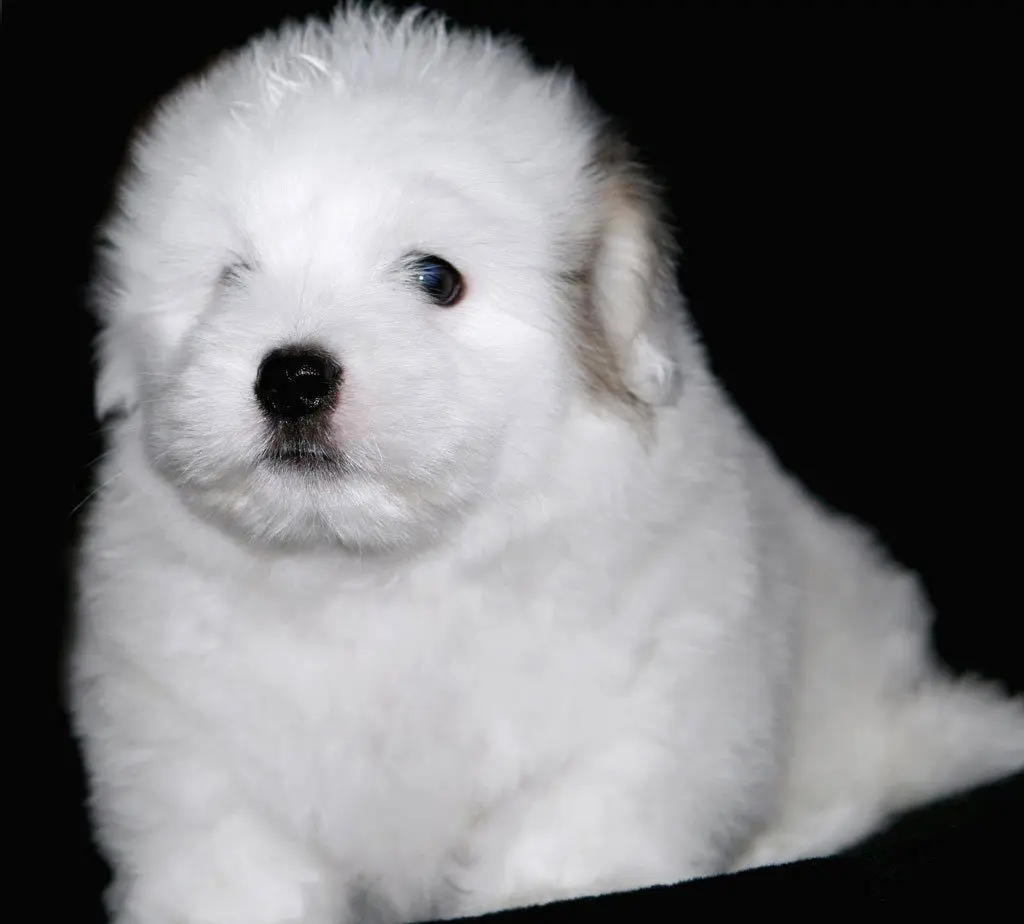
The Coton de Tulear He is originally from the port city of Tulear, in southern Madagascar (currently Toliara).
Its exact origins are unknown., but it probably descends in part from the Bichon. The latter was fashionable in the sixteenth century, and many people kept dogs of this breed as pets or to hunt rats.
The ancestors of Coton de Tulear they could be, Therefore, Bichons owned by French settlers in Madagascar or by sailors, merchants or pirates, who used them to hunt rats on board. A popular half legend of the island speaks of the Bichons accompanied the ladies on a boat and survived the shipwreck.
In any case, These Bichons would have interbred naturally with the Terriers local, giving rise to a new breed of dog described at the time as almost wild and living by hunting.
Later, natural selection worked its way into a living dog, very adaptable and resistant.
From the seventeenth century, These dogs were domesticated and adopted by the "Merinas", one of the island's ethnic groups, and more specifically for its nobility.
at the end of the century, the French nobility settled in the colony of Fort-Dauphin (created in 1643) took hold of this new breed, then baptized as "Royal Dog of Madagascar", coming to enact laws that prohibited commoners from owning them and jealously guarding them on the island.
Like this, the Cotón remained isolated and unknown to the rest of the world for several centuries, time during which it developed remarkable specificities, starting with the fur that gave it its current name. Dense and cottony, protects you from both the cold nights and the heat of the Malagasy days.
Thus appeared the Coton de Tulear what we know today, obviously related to the different Bichons (Havanese, Maltese, Bolognese and above all Bichon Frise, the closest to him).
Madagascar gained its independence in 1960. Tourists, more and more numerous and mostly French, they began to discover the paradisiacal landscapes of the island and their funny puppy so affectionate. A handful adopted them and brought them to France, where they were immediately successful. But, it was not until the following decade when it was possible to speak of export on a larger scale.
During the Decade of 1960, Madagascar had to face multiple economic and political problems, as well as natural disasters. Concerned about these events, Malagasy paid less attention to their national dog, and the breeders of Coton de Tulear gradually moved away from the breed standard. That's how it was until the years 70, when it began to be known also outside of France. But this knowledge - and recognition- followed two different paths: the european and american way.
The spread of Coton de Tulear in Europe
In 1970, Louis Petit, then president of the Société Canine de Madagascar, requested the FCI (International Cynological Federation) the recognition of Coton de Tulear. So a new standard was set and presented to the institution, and the process was successful: the FCI recognized the breed that year. Later, the FCI standard was revised in 1987, 1995 and 1999.
The FCI designated France as the depository of the breed standard, in view of the problematic situation in Madagascar and the difficulty of creating hatcheries on the island. Automatically recognized by the SCC (Central Canine Society), the Coton de Tulear was assigned to 1977 to the Club Français du Chihuahua et des Chiens Exotiques.
France then definitely launched into breeding, breed selection and promotion, under the direction of the FCI. The Cotón began to be exported from France to the rest of Europe and beyond, and France soon had the best specimens, something that continues to happen to a large extent today.
The first Coton de Tulear exported to Europe bore the letters TI (Initial Holder) in their name to indicate that they were original Cotons, that is to say, that his parents were born on the island.
Wherever i went, this happy and carefree puppy won hearts. This was especially true in the UK, where the prestigious British Kennel Club recognized the breed in 1990. Although not one of the most popular breeds there, it is becoming more popular, at around 400 births registered with the organization every year: This figure was three times lower in the early 1990s. 2010.
In France, the number of entries in the Livre des Origines Français (LOF) increased dramatically over the years 80, going from a few dozen a year at the beginning of the decade to more than 1.000 at the end. The trend continued after, with, for example, the crossing of the 1.500 annual births in 1995 and that of the 2.000 ten years later. Since the second half of the second decade of the 21st century, a small drop has been observed., with an annual figure closer to 1.700.
The spread of Coton de Tulear in United States
The French were not the only ones interested in the Coton de Tulear. At the same time it spread through Europe through France, an American biologist who studied lemurs in Madagascar, The doctor. Robert Jay Russell, met him in 1973 and imported the first copies to the United States. The following year, in turn established a breed standard based on the direct descendants of imported individuals, and different from the FCI. In 1976, founded the Coton de Tulear Club of America (CTCA).
Although appreciated, the breed remained - and remains today- much more confidential in North America than in Europe. National canine authorities took longer to recognize the breed: was not up 1996 for the United Kennel Club (UKC) and up 2014 for the American Kennel Club (AKC).
But, several breed fan clubs were formed, some of which developed their own standards. The result is that there are now no fewer than four different standards for the Coton de Tulear in United States:
- UKC standard, followed by NACA (North America Coton Association) ;
- The FCI standard (the “European” standard), developed in France and recognized by the ACC (American Cotton Club);
- The standard USACTC (The United States of America Coton de Tulear Club), which became the AKC standard;
- The standard mCTCA (Madagascar Coton de Tulear Club of America, which replaced the one created by Robert Jay Russell in 1974), and followed by the MCPC (Malagasy Coton Preservation Club).
The differences between these standards are mainly based on two characteristics: color and size. These may include, the MCPC allows a larger size and multiple colors, whereas the FCI standard only allows dogs totally - or almost totally- white and smaller.
But, the breed remains relatively small in the country, occupying the position 80 (of something less than 200) in the ranking of the most popular breeds according to the number of annual registrations in the AKC.
The situation of Coton de Tulear in Madagascar
Although he was named the island's official dog, of which it is the only endemic dog breed, not many left Coton de Tulear in Madagascar. In fact, was a victim of its success in the years 80: a puppy bought from 500 francs in Madagascar were sold ten times more expensive in France. Like this, most newborns were exported.
The situation of the breed in its country of origin today seems like a field of ruins. The number of hatcheries Coton de Tulear in Madagascar it is very low and the quality is not usually the same. In the best case, their dogs show little homogeneity and are quite far from the standard; in the worst case, have major defects and major health problems, because some breeders work exclusively on inbreeding. The Coton de Tulear they are also found in families as pets or on the streets, but most are not purebred.
Although it is highly appreciated as a companion dog and quite popular in some countries. (the Netherlands and Thailand, for example, have become large importers of Cottons French), the Coton de Tulear still a relatively rare breed around the world.
The Coton de Tulear it's a small dog, longer than tall and muscular. His stride is regular, no jumps or jerks, but it covers little ground.
The neck is well muscled and the skin is fine and taut, as in the whole body. The back is firm and muscular, like the rump, which is oblique and short. The chest is long and well developed, the ribs are rounded. The belly is tucked up but not elevated.
The tail is low, in line with the spine. At rest, descends below the hock and the tip rises. In action, curves on the back.
The head of the Coton de Tulear it is short and triangular. The skull is quite wide and slightly domed, with the presence of a slight frontal groove. The stop is not very marked.
The eyes are round and wide apart, dark colored, and the look is alive and intelligent. The ears are triangular and droopy, high insertion. Located close to the cheeks, reach up to the corner of the lips.
The muzzle is straight, the nose is black (although brown color is tolerated), with wide open nostrils. The lips are thin and the same color as the nose.
Teeth are well aligned, articulated in scissors (the upper jaw covers the lower), in clamp (the two jaws are edge to edge) or articulated reverse without loss of contact (the jaws are not the same shape and shift to fit).
The coat is one of the most notable characteristics of the breed: it's cottony, very soft and flexible (never hard or rough), dense and abundant. It can also be slightly wavy.
The coat is generally white, but some auberization stains are allowed (white and tawny hairs) or gray (black and white hairs), especially on the ears.
These stains are also tolerated - but not sought- in other parts of the body, provided they do not alter the general white appearance of the coat.
Size and weight
▷ Male size: 26 – 28 cm.
▷ female size: 23 – 25 cm.
▷ Male weight: 4 – 6 Kg
▷ female weight: 3 – 5 kg
There are a variety of Coton de Tulear which is completely black at birth. The legs, tail and head turn white after a few weeks, while the rest of the body takes on a silvery-gray hue in two to three years.
Call Panda, this variety is highly sought after in the United States and Canada.
The Coton de Tulear he is a very nice companion, with a cheerful and stable character: It's full of energy, spontaneous, loving and faithful. He loves to attract attention and does not hesitate to play a clown.
He is also a seducer capable of looking at his master with large innocent eyes or of clowning around in hopes of escaping punishment.. Observant and sensitive, knows how to recognize the right moments to achieve their goals, for example when his master is available to him, but he also knows how to find faults and take advantage of them.
So, not necessarily an ideal dog for a novice owner: if you love to please your master and, in fact, is generally considered quite compliant, can also be stubborn, like many small dogs. It should be noted that the females of this breed are usually more independent and dominant than the males..
Very sociable, the Coton de Tulear gets along with humans he meets, but instead is suspicious and / or fearful of strangers. It can be considered as an alarm dog, although their propensity to fulfill this role varies significantly across individuals, some being more territorial than others.
On the other hand, they tend to get along well with other dogs and animals, including cats, whether or not they belong to the house.
Vivaces and smart, they love to play and they especially like children, regardless of your age. In fact, It is a breed of dog recommended for children, for which it is an excellent playmate.
Both children and adults, These naughty and alert little dogs quickly become attached to their family and are very sensitive to the moods and emotions of their companions. This makes it an exceptional companion., endowed with empathy and considered a real stress reliever. They are very cuddly and like to snuggle with their owners and "talk" to them with a lot of vocalization and growling., and they are delighted to hear back.
Despite her delicate appearance, these resilient dogs are physically and mentally strong and easily adapt to change. Not afraid to travel or commute, the most important thing for him is to be with his family and share his activities. Otherwise, it is an ideal option for an owner who wants to take their dog on vacation, especially since its size also makes things easier.
On the other hand, cannot be left alone for long. If his owners work during the day and have no choice but to leave him home alone, the presence of another animal is an interesting option to avoid problems, such as destructive behavior or untimely barking, that can be important and wear down the nerves of the neighborhood. The Coton de Tulear It is also, usually, a pretty noisy dog, who likes to give the voice.
For this reason, for his good character and for his need in rather moderate exercise (30 minutes a day are enough for him), the Coton de Tulear It is a breed of dog adapted for elderly and / or not very active people. Easily adapts to a calm and sedentary lifestyle: a daily walk and play sessions are enough for your happiness. This low need for activity and its small size make it an ideal dog for apartments, although of course he is also happy in a house with a garden in the country. As long as you can exercise and are well trained, it is very quiet at home. Otherwise, they can be very energetic, to the point of being exhausting.
If you have free access to a garden, it is better that the latter is closed. The Coton de Tulear he's too attached to his family to really run away, and does not have a very marked hunting instinct, but your curiosity may push you to follow a clue and not find your way back. At the same time, early training to remember can greatly reduce the risk of problems, especially if allowed to walk without a leash.
In any case, having a garden, even if it is big, does not dispense with the need to walk it daily. In effect, walks are not only interested in allowing the dog to stretch its legs: allow you to possibly meet colleagues, which is always enriching, but also stimulate your senses (and especially his sense of smell), what is necessary for your psychic balance.
The Coton de Tulear also suitable for active owners: he likes nothing more than sharing family activities and appreciates dog sports such as obedience, el agility, the canine dance or the cavage. But, your endurance has its limits: not able to run long distances. So, not a companion to take for jogging or cycling.
The Coton de Tulear is an intelligent dog that understands very quickly what is expected of him. He is constantly listening to his master, which makes it quite easy to educate, as long as certain conditions are respected, because he is also stubborn and very observant: easily detects faults and does not hesitate to take advantage of them to do just what you want. So, his master must show sweetness, but also firmness and great coherence, so as not to be taken at fault.
Must be educated from an early age and responds very well to dog training method positively, appreciating the rewards in the form of play, treats or caresses. But, since he is prone to getting bored quite quickly, puppy training sessions should not exceed ten minutes. It also, how he is a playful dog and that he can be very energetic, you have to show him very quickly the return to the basket (and therefore to calm down), as well as the recall.
Like all dogs, the Coton de Tulear also needs to be socialized very soon, to prevent him from becoming fearful or aggressive. It is also essential to get him used to being handled from a young age, since its coat requires important maintenance throughout its life.
The Coton de Tulear It is a small and resistant dog that, usually, has a robust constitution and good health. It also, thanks to its particular fur, fears neither cold nor heat.
But, there are a number of more or less recurrent diseases to which they are prone:
- One of the most frequent is progressive retinal atrophy. Genetic in origin, can reach various degrees of gravity, reaching the total blindness of the dog;
- The Hip Dysplasia it's not weird either, y corresponds to a situation where the head of the femur does not fit into the corresponding socket of the hip. This causes pain, lameness and a prosthesis may be required;
- Rarer are the patella dislocation and degenerative myelopathy, which generally appears around the 9 years and is characterized by a gradual loss of coordination. These conditions are not painful for the animal, but there is no treatment for them.
There is also no treatment for ataxia neonatal, which fortunately is not very widespread. This sickness, caused by a genetic mutation, affects the part of the brain that controls movement and coordination, so the puppies that suffer from it are unable to walk. They are usually euthanized before their first birthday.
In addition to these diseases with often serious consequences, the Coton de Tulear are prone to certain less serious problems, but they require a certain vigilance.
This is the case in particular of skin allergies. They cause itching that prompts the dog to scratch, with the key to a risk of infection.
You should also keep a close eye on your dog's eyes, since they usually run a lot: Cleaning daily or every other day is usually necessary to avoid eye inflammation or skin infection due to constant humidity.
Last, a dog with hanging ears is at increased risk of otitis, and the Coton de Tulear does not escape the rule. So, great vigilance is also to be established at this level.
Life expectancy
14 years
The hair Coton de Tulear is abundant and requires daily brushing, knots can easily form at the base. If there are many, the only solution is even shaving.
So, it is necessary to get used to these daily sessions very soon, and it is necessary to take your dog to the groomer at least twice a year, to prevent hair from becoming too long.
This is all the more true since the Coton de Tulear It is a breed of dog that does not change. Loses very little hair, which makes it a hypoallergenic dog.
We can bathe him once a month, but always using a shampoo adapted for dogs that does not dry out the hair and skin (are prone to skin allergies), and drying it carefully after.
You also need to take care of your teeth by brushing them two to three times a week.. The ideal is, of course, a daily frequency, which is not a problem if you are used to it since childhood.
At the same time, regular inspection and cleaning of the eyes (all days, as it has a strong tendency to have watery eyes) and from the ears (at least once a week) will help avoid many problems like conjunctivitis, ear infections, ear scabies, etc.
Last, as with all dogs, nails may need to be trimmed from time to time. How often depends on your lifestyle, because a very active individual wears them out naturally. If you hear them snap on the ground when you walk, it's time to cut them out.
The Coton de Tulear not a difficult dog to feed, and does not have a particular propensity to be overweight. Good quality small croquettes are perfect, and can be given in one or two meals. On this last case, it is advisable to opt for a lighter portion in the morning and a larger one in the evening.
In any case, your diet should be adapted to your age, health and activity level.
You should also make sure that your dog has a bowl of fresh, clean water at all times..
The Coton de Tulear he is essentially a companion dog with many qualities and rarely disappoints in this role.
For his sensitivity and playful nature, can also be used as a therapy dog, especially with depressed people.
Last, his vivacity and his permanent attention to his master make him stand out in certain canine sports such as agility or obedience.
The price of a puppy Coton de Tulear registered in the LOF ranges from 1.000 and 1.500 EUR, but it can reach the 2.000 euros for the specimens of the most beautiful lines.
Breeders of the breed "Coton de Tulear"
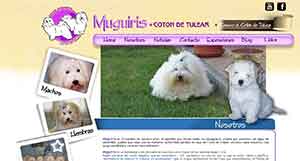
- Muguiris – We work with the ROYAL CANINE SOCIETY OF SPAIN ( RSCE ) ( NORTH-WEST – PEDIGREE ). We do not work with unofficial parallel canine societies. AFFIX MUGUIRIS, RSCE Nº 011939 * FCI Nº 0228/04 – La Rioja – Spain

- Saianel kennel – Recognized by the International Cynological Federation. WOMEN 0803/06. Partner No. 792 of the Sociedad Canina Castellana SCC. – Zoo core number ES349020000019 – AFFIA: SAIANEL Nº 013861 – Palencia (Palencia)

- Coton de Tulear D´Eramprunyà – No. of the Zoological Center: T- 2500160. – Afijo D'Eramprunyà: 7791 – Road from Reus to Mont-roig del Camp – T-310 Km 10 of Montbrió del Camp (Tarragona)
Characteristics "Coton de Tulear"
Coexistence is important that you have with your new friend. Before considering the acquisition of a dog of the breed "Coton de Tulear" you know certain factors. Not all breeds of dogs are apt to live in an apartment, you must take into account his character, their need for exercise, their interaction with other pets, their care and if you have small children, their level of tolerance towards them.
Adaptation ⓘ
2,0 of 5 stars (based on 1 review)
|
friendly dog ⓘ
4,0 of 5 stars (based on 1 review)
|
hair loss ⓘ
1,0 of 5 stars (based on 1 review)
|
Affection level ⓘ
4,0 of 5 stars (based on 1 review)
|
Need for exercise ⓘ
2,0 of 5 stars (based on 1 review)
|
Social need ⓘ
5,0 of 5 stars (based on 1 review)
|
Home ⓘ
4,0 of 5 stars (based on 1 review)
|
Toilet ⓘ
2,0 of 5 stars (based on 1 review)
|
Friendly with strangers ⓘ
2,0 of 5 stars (based on 1 review)
|
barking ⓘ
3,0 of 5 stars (based on 1 review)
|
Health ⓘ
4,0 of 5 stars (based on 1 review)
|
Territorial ⓘ
4,0 of 5 stars (based on 1 review)
|
Cat friendly ⓘ
3,0 of 5 stars (based on 1 review)
|
Intelligence ⓘ
4,0 of 5 stars (based on 1 review)
|
Versatility ⓘ
3,0 of 5 stars (based on 1 review)
|
Child friendly ⓘ
5,0 of 5 stars (based on 1 review)
|
Surveillance ⓘ
3,0 of 5 stars (based on 1 review)
|
joy ⓘ
5,0 of 5 stars (based on 1 review)
|
Photos:
1 – Tuléar cotton by https://pixabay.com/es/photos/coton-de-tulear-perro-mascota-5799865/
2 – Tuléar cotton by https://pixabay.com/es/photos/el-coton-de-tulear-perro-2417968/
3 – Tuléar cotton by https://www.hippopx.com/es/puppies-coton-tulear-dog-animal-cotton-tulear-white-petit-domestic-animal-6371
4 – Coton de Tulear Puppy by EthanMallang365, CC BY-SA 4.0, via Wikimedia Commons
5 – Tuléar cotton by https://pixabay.com/es/photos/coton-de-tulear-perro-mascota-5799868/
6 – Conton de Tulear, Granadina de Domaine de la Louvière by CamilleVila, CC BY-SA 3.0, via Wikimedia Commons
- FCI CLASSIFICATION:
- Group :
- Section : . .
Federations:
- FCI – Group 9 Section 1.2 "Cotton Tulear" ⓘ
- AKC – Toy Group ⓘ, ANKC ⓘ
- CKC – Group 5 – Toys ⓘ
- UKC – Company ⓘ
FCI breed standard "Coton de Tulear"
Origin:
Madagascar
Date of publication of the valid original standard:
25.11.1999
Use:
Companion dog
General appearance:
This is a small companion dog, longhair, white, cottony texture. His eyes are round, dark and lively and intelligent expression.
important proportions:
- Relationship between height at withers and length of body is 2:
- Ratio of head length to body length is 2:5.
- Relationship between the length of the skull and the length of the muzzle is 9:
Behavior / temperament:
Happy and balanced character. He is very sociable with humans and with his fellow human beings. It adapts perfectly to any lifestyle. The character of the Coton de Tuléar is one of the main characteristics of the breed.
Head:
Overall view, it's short; view from above, is triangular.
Cranial region:
- Craging: Seen from the front, it is slightly domed; it is quite wide in relation to its length. Superciliary arches are poorly developed. The front groove, as well as the protuberance and the occipital crest are not very marked. The zygomatic arches are developed.
- Dnaso-frontal depression (Stop): It is little accentuated.
facial region:
- Trufa: It occurs in the prolongation of the nasal bridge. Black, although chestnut is accepted. The nostrils are wide open.
- Hocico: It is straight.
- Labios: Fine, stretched, the same color as the truffle.
- Jaws/Teeth: The teeth are well aligned. The joint is scissor-shaped, forceps or inverted scissors, without losing contact. The absence of the PM1 will not be penalized. M3s are not taken into consideration.
- Cheeks: Thin.
- Eyes: They are rather round. dark, alert gaze, well separated. The edge of the eyelids is pigmented black or brown, depending on the color of the truffle.
- Ears: Pendants, triangular, stand high on the skull. His limb is thin. They are attached to the cheeks and extend to the corner of the lips. They are covered with white hairs or with light gray traces (mix of white hairs and black hairs that give a light gray appearance) or roan red (mix of white hairs and tawny hairs giving a roan red appearance).
Neck:
He is well muscular and slightly arched. It is well attached to the body.
The ratio of neck length to body length is 1/5. The skin is well stretched and there is no double chin.
Body:
Seen as a whole, the top line is very slightly convex. The dog is longer than tall.
- Cruz: It is little accentuated.
- Espalda and tenderloin: The back is firm; the top line is slightly convex. The loin is well muscled.
- Glikeness: It is oblique, short and muscular.
- Pecho: Well developed, long; descends to the level of the elbows. The ribs are well sprung.
- Vinbetween: picked up, but not aggrieved.
Tail:
Low, in the axis of the spine.
- During rest it descends below the hock and the limb is raised
- During movement she is hunched over her back, with the tip towards the nape, the cross, the back or the loin In dogs with thick fur, the limb may lie on the dorsal-lumbar region.
Tips
Former members:
- Ageneral appearance: Seen in conjunction, they are leaden.
- Hshoulders and arms: The shoulders are oblique and muscular. The length of the humerus visibly corresponds to that of the scapula.
- Forearm: The forearms are vertical and parallel. They are well muscled and strong boned. The length of the forearms clearly corresponds to that of the arm.
- CArpos: They are located in the extension of the line of the forearm.
- Metacarpus: Solid. Seen in profile, are slightly oblique.
- Previous feet: Small and round. Fingers are well together and arched. The pads are pigmented.
Later members:
- Ageneral appearance: Seen in conjunction, they are leaden. Although it is not valued, the presence of dewclaws is not penalized.
- Thighs: They are well muscled. The coxofemoral angle is about 80°.
- PinErna: Oblique, they form an angle of about 120° with the femur. Hock: Delgado, well defined. Its angle is approximately 160°.
- Metatarsals: They are vertical.
- Pinis later: Small, round. Fingers are well together and arched. The pads are pigmented.
Movement:
Light and loose, but it doesn't cover much ground. During the movement the top line remains firm and the dog does not waver.
Piel: It is thin and adheres well to the body in each of its parts. It is pink, although it may be pigmented.
Mantle
Plink: It is one of the characteristics of this breed, since that's where its name is derived. It's soft, loose, cottony, never hard or rough. Hair is dense, abundant and can be very slightly wavy.
Codor: Background color: white.
On the ears some light gray traces are accepted (mixture of white hairs and black hairs) or roan red (mixture of white hairs and tawny hairs. In all other parts of the body such traces are tolerated as long as they do not modify the general white appearance of the coat.; but they are not wanted.
Size and weight:
Tby hand:
- Ideal size: for the males: 26 - 28 cm.,
- For the females: 23 - 25 cm..
With a tolerance of 2 cm for the top size and 1 cm for bottom size.
Pthat:
- Males: 4 kg, up to a maximum of 6 kg.
- Hblaze: 3,5 kg up to a maximum of 5 kg.
Fouls:
Any deviation from the aforementioned criteria is considered as a fault and the severity of this is considered to the degree of the deviation to the standard and its consequences on the health and well-being of the dog..
Serious misconduct:
- Flat or overly domed skull; narrow skull.
- Snout: disproportion between skull / muzzle correlation.
- light eyes, too almond or salty Ectropion, entropion.
- Too short, presented backwards (ears in pink). Very short ear hairs.
- Neck too short or thin; sunk in the shoulders.
- Top line too convex or sunken.
- Horizontal or narrow croup.
- Straight shoulders.
- Limbs that deviate inward or outward, elbows off, hocks wide open or closed, straight angulations
- Too short hair, too wavy or curly.
- Partial or very light pigmentation of the eyelids or lips. Discolored nose or traces of discolored spots.
disqualifying fouls:
- Aggressiveness or extreme shyness.
- Any dog showing clear signs of physical or behavioral abnormalities.
Cgeneral type characteristics
- Lack of ethnic characteristics that make overall, the animal is not sufficiently similar to its peers of the same breed.
- Size and weight that deviate from the limits and tolerances of the standard.
Cparticular characteristics of type
- Bowed nasal bridge
- Prominent eyes, with features of dwarfism; eyes too light; gaze eyes.
- Raised or semi-raised churches.
- Tail that does not reach the hock; set high.
Fully screwed(forming a closed curl); attached to the back or thigh; vertical position.
Absence of tail.
- atypical hair, ensortijado; woolly or silky.
- Coat with abundant spots; any pure black stain.
- Total absence of pigmentation in one eyelid, nose or lips.
Anormalities
- Upper or lower prognathism with loss of contact, vertically separated and open incisors.
- Absence of teeth (except the PM1 and M3).
N.B.:
- Males should have two normal-appearing testicles fully descended into the scrotum..
- Only functionally and clinically healthy dogs, with the typical conformation of the breed, should be used for parenting.
TRADUCCION: Mrs. IRIS Carrillo. Official language: FR.
Source:
F.C.I - International Cynological Federation
1. Toliara, Coton, Cotie (English).
2. Coton (French).
3. Coton, Baumwollhund (German).
4. Coton, Nenhum (Portuguese).
5. Coton, Cotie (español).
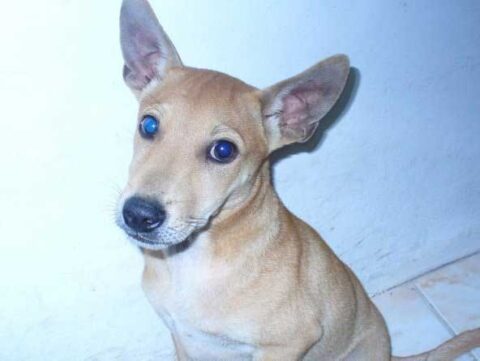

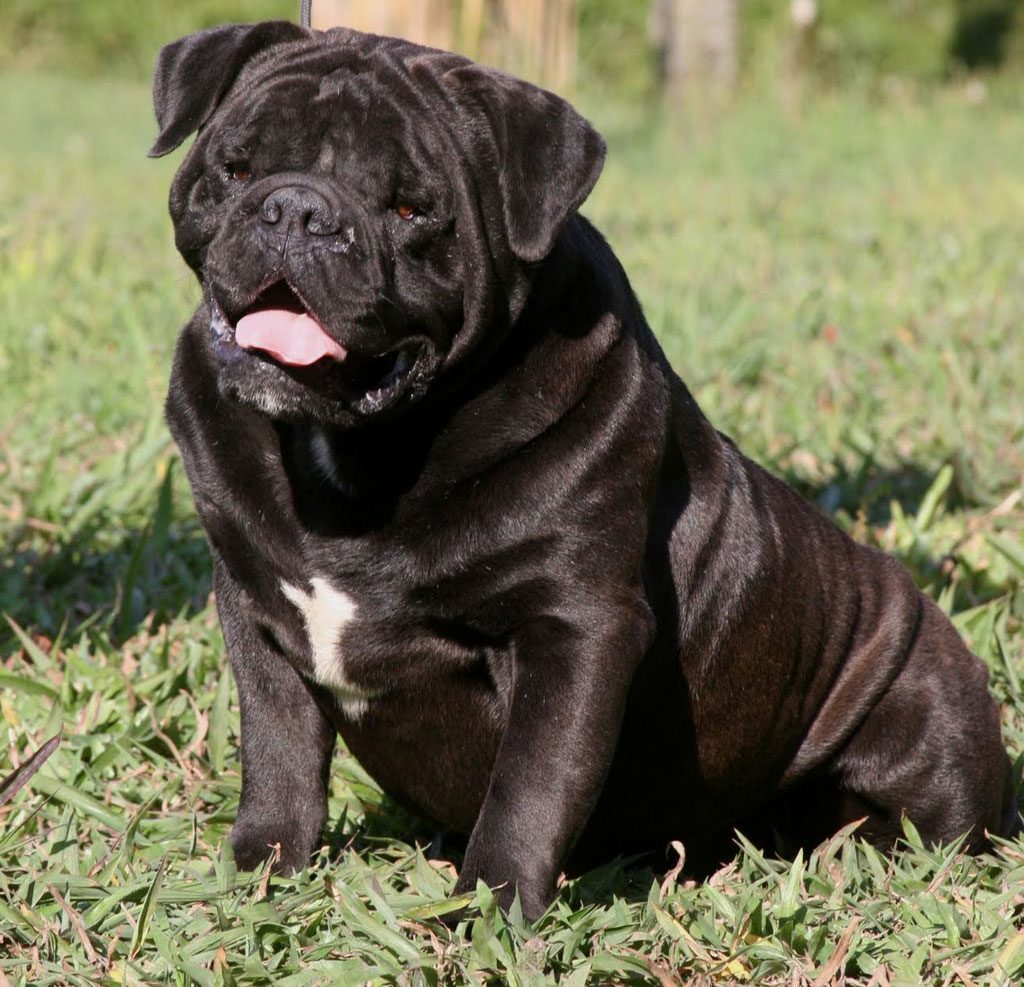

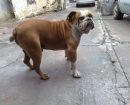
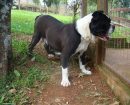
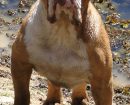
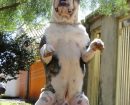
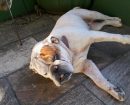
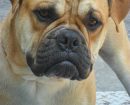
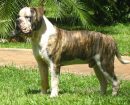
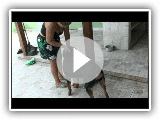 BULLDOG CAMPEIRO SON OF CALMA ORKUT CONTACTS..
BULLDOG CAMPEIRO SON OF CALMA ORKUT CONTACTS.. Buldogue Campeiro – conviviality
Buldogue Campeiro – conviviality Campeiro Bulldog in deals – Part I
Campeiro Bulldog in deals – Part I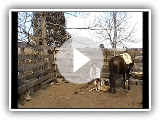 Campeiro Bulldog in deals – part 2
Campeiro Bulldog in deals – part 2 CBKC – "Campeiro Bulldog"
CBKC – "Campeiro Bulldog" 

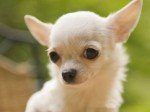


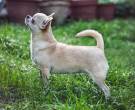
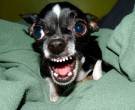


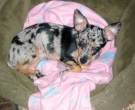

 10 trivia about the chihuahua
10 trivia about the chihuahua DOGS – The bath and care of the Chihuahua
DOGS – The bath and care of the Chihuahua Training chihuahua
Training chihuahua Chihuahua – Royal Canin Dog Breeds
Chihuahua – Royal Canin Dog Breeds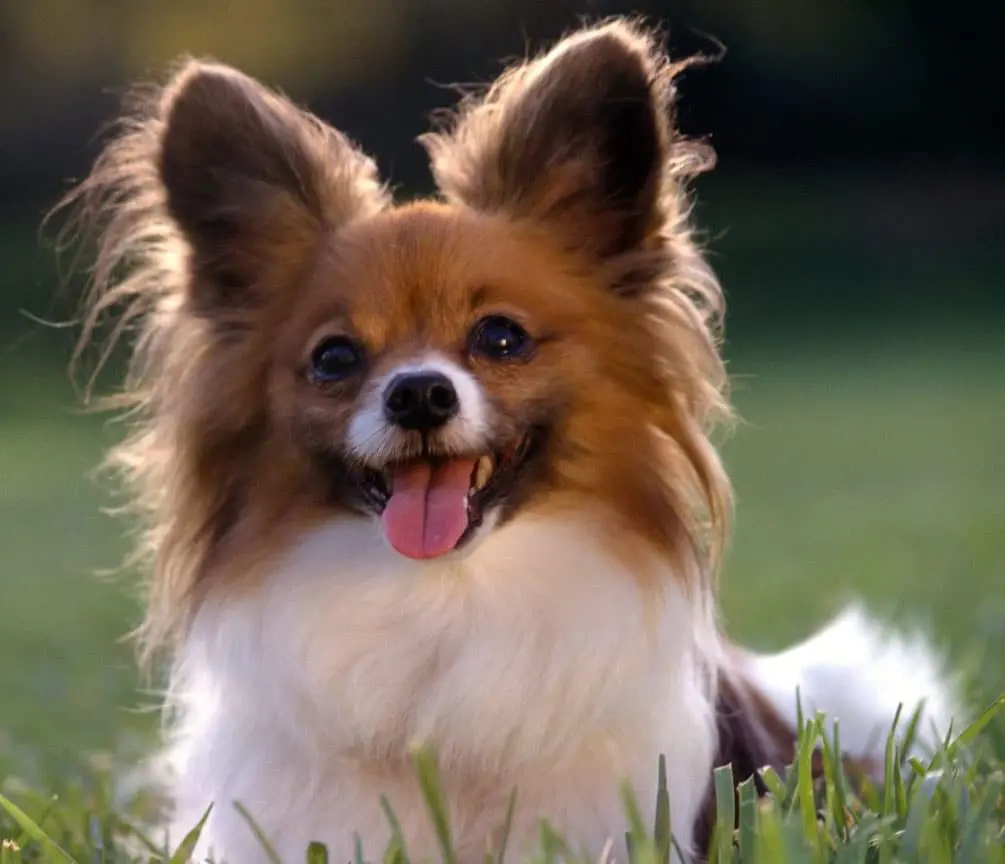
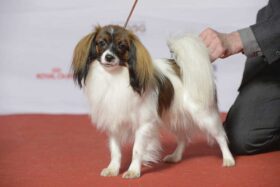

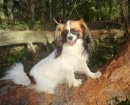
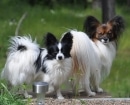
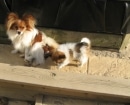

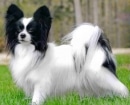
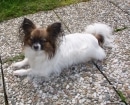
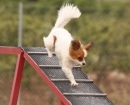


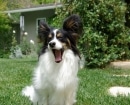
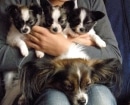
 The Papillon Spaniels of EUSKADI
The Papillon Spaniels of EUSKADI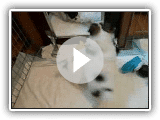 pups l'epagneul Butterfly dwarf vlinderhondje
pups l'epagneul Butterfly dwarf vlinderhondje Our two kitties…
Our two kitties…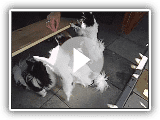 Butterflies
Butterflies
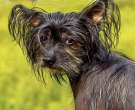
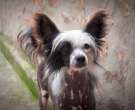

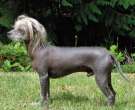
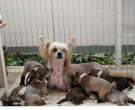
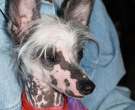
 Chinese Crested Dog – Top 10 Facts
Chinese Crested Dog – Top 10 Facts 8 Things Only Chinese Crested Owners Will Understand | Chewy
8 Things Only Chinese Crested Owners Will Understand | Chewy Crested Chinese
Crested Chinese CHINESE CRESTATE
CHINESE CRESTATE



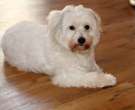
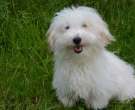

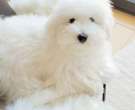
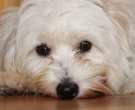
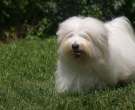
 Cotton Tulear
Cotton Tulear Cotton Tulear
Cotton Tulear 10 typical things of a coton de tulear dog
10 typical things of a coton de tulear dog Tulear cottons | Breed Judging 2020
Tulear cottons | Breed Judging 2020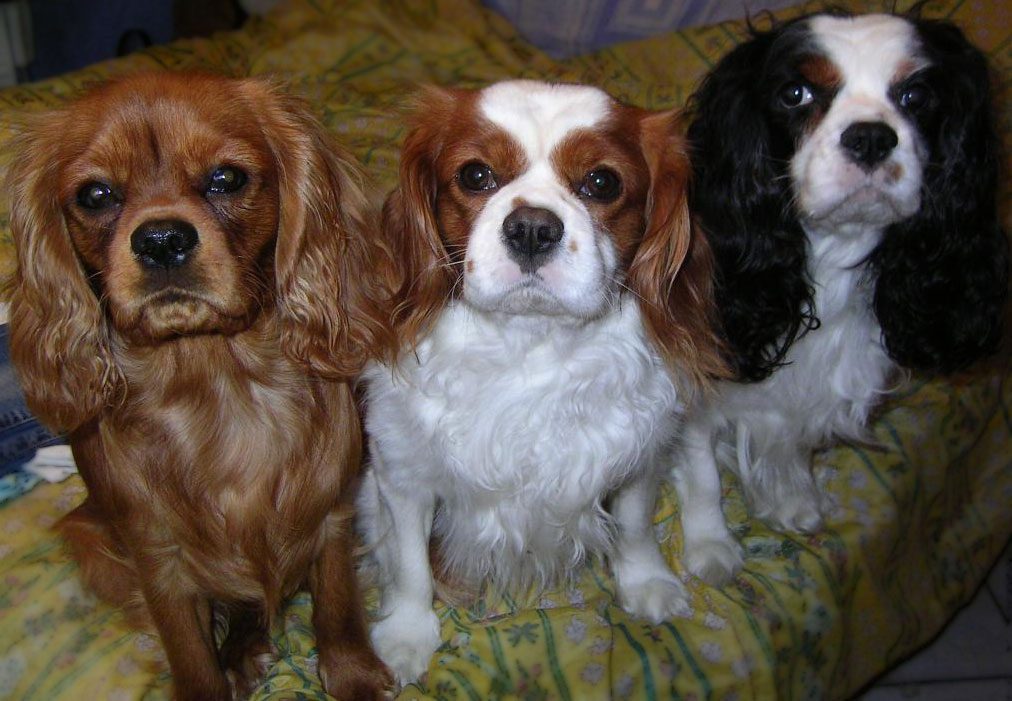
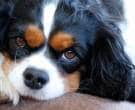









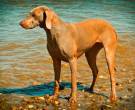
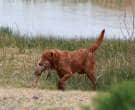
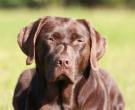
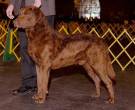

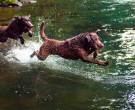
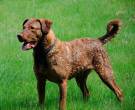
 Dogs 101: Chesapeake
Dogs 101: Chesapeake Chesapeake | Breed Judging 2020
Chesapeake | Breed Judging 2020 Breed All About It – Chesapeake
Breed All About It – Chesapeake Chesapeake
Chesapeake